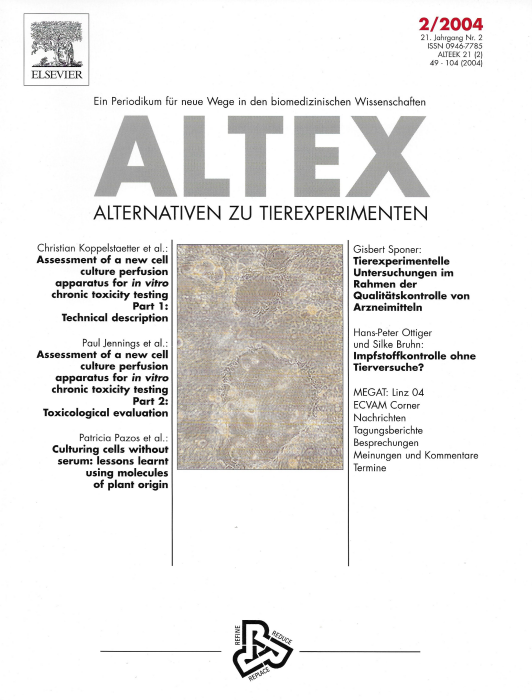Assessment of a new cell culture perfusion apparatus for in vitro chronic toxicity testing. Part 2: Toxicological evaluation
Main Article Content
Abstract
The goal of replacement, refinement and reduction of animal testing is critically dependent on the development and assessment of novel in vitro methodologies and the further development of existing methodologies. Here, we evaluated the use of a modified perfusion cell culture apparatus for application to chronic in vitro nephrotoxicity testing using DMSO, SDS, paracetamol and cyclosporine A as test compounds.
Renal epithelial monolayers were cultured on microporous growth supports and exposed to test compounds under static or perfusion conditions. Alamar Blue reduction, gamma-glutamyl transpeptidase activity (GGT), lactate dehydrogenase activity (LDH) and remnant protein were used to assay cell toxicity. There was no significant difference in IC50 values between static and perfusion cultures up to 72 hours exposure. However, the perfusion system allowed continuous real-time monitoring of plasma membrane damage, which gives important information of time, duration and scale of toxicity.
The complexity of the system restrains its use to low-throughput analysis. However, the real and theoretical advantages of this and similar systems merit further investigations.
Article Details
Articles are distributed under the terms of the Creative Commons Attribution 4.0 International license (http://creativecommons.org/licenses/by/4.0/), which permits unrestricted use, distribution and reproduction in any medium, provided the original work is appropriately cited (CC-BY). Copyright on any article in ALTEX is retained by the author(s).


